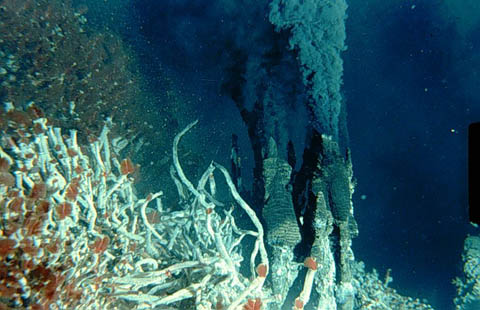

The researcher's findings could lend support to the theory that life on Earth first originated on the deep-ocean floor in extreme heat, rather than in warm pools of water on the surface of Earth as many scientists have long conjectured. According to this theory, the
earliest creatures derived their energy through a process known as chemo synthesis by metabolizing inorganic chemicals such as sulfur, rather through the process of photosynthesis, which converts sunlight into energy.
A small earthquake off the coast of Washington State in June of 1999 shook
up some hydrothermal vents located in that same area. Sensors that had
been deployed to study the hydrothermal vents recorded some interesting
information. About 4 days after the earthquake, the volume and temperature
of water spilling from a cluster of hydrothermal vents began to rise.
Different sites were being studied by different scientists and they all
reported similar findings. Each site reported its own fluctuation cycle
which ranged between eight and twelve days. Prior to this event scientists
had concluded that the characteristics of hydrothermal vents were stable.
Now that conclusion must be discarded. Research reported in the September
14th 2000 issue of Nature by several groups of investigators suggests that
the flow of water to hydrothermal vents might be much more complex than
geologists had thought.
